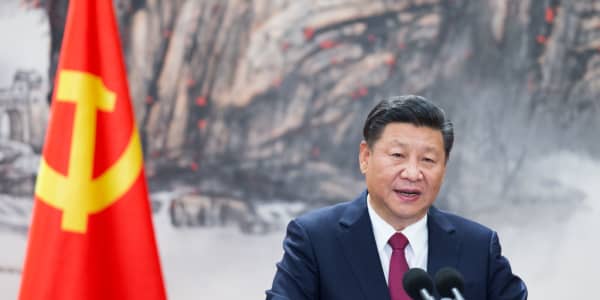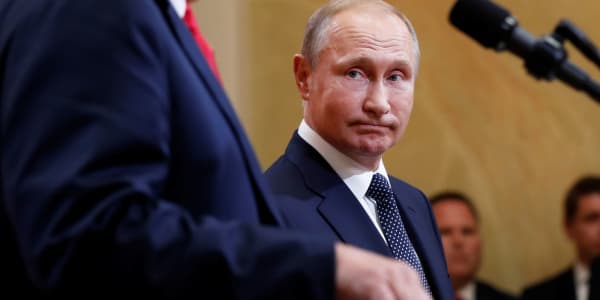Investors have been sold on emerging markets as a portfolio diversification tool—but would it be better to say most investors are being duped by it?
There's a terrible irony in the idea that asset classes such as emerging markets equities and commodities can improve portfolio returns over time based on non-correlation to core equity holdings. These assets don't prove up to the task when investors need them most. Worse, returns data shows that including emerging markets and commodities funds in a portfolio may be an act of doubling up on the same bad exposure.
According to research by U.S. Bank, from 1997 through 2011, the correlation between emerging markets stock and commodity price moves was 35 percent, but it rose to 50 percent during periods of stress, like the 2008 meltdown. More recently, the correlation has been even greater. During the volatile month of August, correlation between two broad emerging markets equity and commodity index funds—the iShares MSCI Emerging Markets ETF (EEM) and iShares S&P GSCI Commodity-Indexed ETF (GSG)—reached 84 percent.
"In August normal relationships broke down and many markets started trading together more so than normally," said Rob Haworth, who oversees $127 billion as senior investment strategist at U.S. Bank Wealth Management. "Oil and global equities started following each other much more closely than usual."
You may own more EM than you think
These aren't marginal investments. While retail investors may hold little in regional funds, such as a Latin American equity fund, many do have exposure to broad emerging markets funds. These funds in turn have significant weightings in countries beyond China and the Asia region, including Latin America, Eastern Europe and South Africa, all heavily dependent on commodities for exports—namely, oil and gold.
Many 401(k) plans now have a discrete emerging markets fund as an option, too, as having exposure to the developing world has been a big marketing push for the fund industry in the past decade. The Vanguard Emerging Markets Stock Index Fund (VEIEX), for example, has $61 billion in assets—representing almost all of the assets in emerging markets index funds, which at the end of 2014 stood at $63.5 billion, according to Morningstar data.
From 2010 to 2014, assets in diversified emerging markets funds, both passive and active, grew from $226 billion to $303 billion, according to Morningstar, with the greatest growth occurring in 2012 and 2013, at 30 percent and 14 percent, respectively. By 2014 the growth rate in assets slowed to a crawl, at just over 3 percent, but according to Vanguard, 29 percent of the retirement plans it services now offer a distinct emerging markets fund.
Net asset flows in emerging markets funds
Year-to-date
Actively managed diversified EM funds: $10 billion
Index diversified EM funds: $3.9 billion
India funds: $475 million
China funds: ($360 million)
Performance of emerging markets funds
Year-to-date
Actively managed diversified EM funds: (14.23 percent)
Index diversified EM funds: (14.42 percent)
(Source: Morningstar, data as of 9/09. Parentheses indicates negative flows and performance.)
The data on correlations doesn't imply an investor should throw in the towel on diversification, but maybe that they should throw out some of the assumptions that have led to a lazy or, in the least, too broad an approach to investing in emerging markets. For one, if you're worried about whether you should stick with an emerging markets fund, you can't just look to China for answers. Look at how much it costs to fill up your gas tank.
Unfortunately, the commodity downturn probably won't end until China recovers, because it is the world's largest commodity consumer. "Growth is decelerating in emerging markets, particularly for China, so the demand for oil and natural resources seems to be slowing," said Michael Arone, an investment strategist at State Street Global Advisors. "That leads us to underweight both emerging market stocks and commodities."
Many emerging markets were suffering long before China's stock bubble popped this June. Major components of most emerging markets funds—Brazil, Russia, South Africa, Chile and Indonesia—are heavily dependent on commodity exports to grow. Their markets have been tanking for several months because of the collapse in oil, gold and other resources.
As a result, while the average commodity mutual fund is down 30 percent in the past 12 months, the average emerging markets fund has also fallen 25 percent, according to Morningstar.
Read MoreGot your international bond exposure? You may need it
Because of the increased correlation, Haworth, who has discretion to advise investments in both active and passive strategies across all asset classes, has been recommending his clients keep a lower than average weighting in commodities in their portfolios. Meanwhile, despite their cheaper valuations than U.S. stocks, he is only neutral on emerging markets. What's more, he thinks clients should now be using actively managed emerging funds instead of index ones.
"We're seeing a much greater differentiation in the emerging markets story than we had prior to this time," Haworth said. "Before, there was a single narrative about investment-driven growth. But as the commodities tide has washed out, the stories in emerging markets have become different. Country selection in emerging markets funds begins to matter."
That's because while countries like Brazil export oil and other resources, countries like India and Turkey import them. Import countries should actually benefit from the commodity decline. So money managers who can underweight export countries and overweight import ones have an advantage over index funds that must hold a market-sized position in each country.
Top 5 actively managed emerging markets funds
Year-to-date
Brown Advisory Emerging Markets Small-Cap (BAFNX): 3.9 percent
JOHCM Emerging Markets Small Mid Cap Equity (JOMMX): (3.1 percent)
Seafarer Overseas Growth and Income (SIGIX): (3.9 percent)
Huntington Global Select Markets (HGSIX): (3.9 percent)
ICON Emerging Markets (ICARX): (5.3 percent)
(Source: Morningstar, data as of 9/09. Parentheses indicates negative performance.)
We're seeing a much greater differentiation in the emerging markets story than we had prior to this time. ... Country selection in emerging markets funds begins to matter.Rob Haworthsenior investment strategist at U.S. Bank Wealth Management
Emerging markets are not nearly as efficiently priced as U.S. and developed markets. While the average total return of both actively managed and passively managed emerging markets fund in the year-to-date period through Aug. 31 was negative 12 percent, there is wide variance in the returns of actively managed emerging markets funds. It is not unreasonable to think with the proper research, an individual investor could find an active fund to beat the index in emerging markets.
Moreover, an active manager can buy stocks that aren't tied to commodity prices, even in countries suffering from their decline. "The majority of our portfolio is in companies which offer products and services that aren't dependent on commodity price swings," said Andrew Foster, manager of the Seafarer Overseas Growth and Income Fund (SFGIX).
One of Foster's top holdings, Valid Solucoes, is a Brazilian company that prints documents requiring a high degree of security—credit cards, financial statements and driver's licenses. "There are not many companies with the necessary certifications to do this kind of business, and it has nothing to do with the commodity cycle," Foster said. In fact, this August the company's American subsidiary Valid USA started a five-year contract printing driver's licenses for the state of Washington.
The diversification double whammy
By favoring growth-oriented stocks instead of commodity-oriented ones, Foster's fund has beaten 99 percent of its peers in the past year, according to Morningstar data. Seafarer has still fallen 13 percent, but that's about half as much as the average peer fund. Foster attributes most of his loss to slides in emerging markets currencies. "Some countries, such as Brazil and Russia, are too narrowly dependent on the commodity cycle and its success to support the value of their currency," he said. "Even if their stock markets don't fall, their currency can be hollowed out."
For U.S.-based emerging markets investors, there is a double whammy in the current environment—stock losses plus currency slides against the dollar. So, for instance, even though Valid Solucoes' stock is up 15 percent in 2015, U.S. investors in it still have losses because the Brazilian real is down 31 percent against the dollar.
Read MoreTime to stop blaming China for the market rout
While Foster could hedge his currency exposure to neutralize its impact, he said doing so is so cost prohibitive it isn't worth it unless he knew for sure which way a currency was heading. Since predicting currency moves is extremely difficult, he generally doesn't hedge.
Yet there are other workarounds for active managers facing a currency slump. Van Eck Emerging Markets (GBFAX) fund manager David Semple owns a stock called Luxoft Holding. A software company based in Switzerland, Luxoft staffs a significant part of its workforce, 23 percent, with Russian programmers and has several offices in Russia. But it conducts most of its business in U.S. dollars and euros. As such, with the ruble collapsing, it became cheaper for Luxoft to pay its Russia-based workforce. "If Luxoft does $1 million worth of business with a U.S. bank, it still gets paid $1 million, but instead of it costing, say, $800,000 worth of labor to do the job, it now costs $500,000 because of the ruble's slide," Semple said. The company's ruble exposure has been declining though, down to 16 percent of expenses from 21 percent in March, the company noted.
—Lewis Braham, special to CNBC.com
(Correction: Luxoft Holdings is based in Switzerland, and 23 percent of its programmer staff is Russian. An earlier version of this article misstated those facts.)




